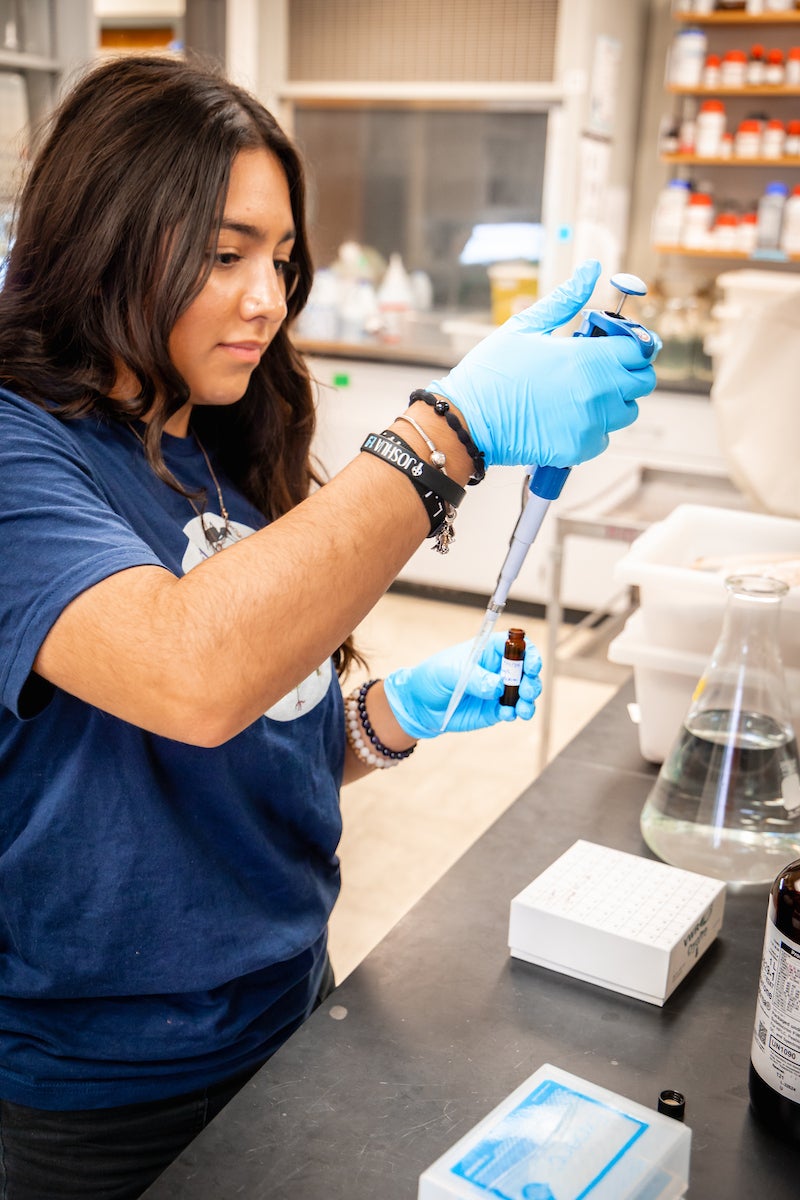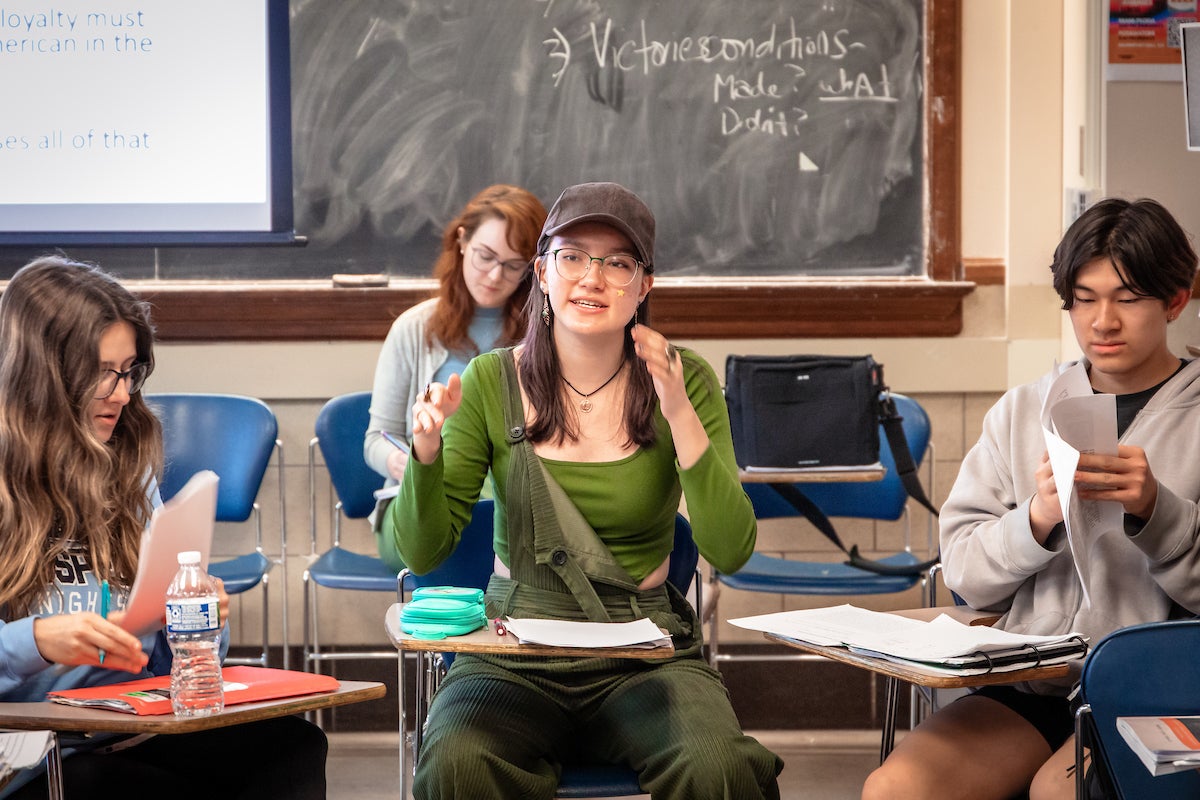The University of Illinois Urbana-Champaign is renowned for providing students with rewarding and enriching educational experiences, especially in the liberal arts and humanities. The College of Liberal Arts & Sciences offers top-rated programs and thousands of classes catering to all interests.
 As you consider your options while choosing a major, you might wonder: What exactly is the difference between liberal arts and humanities, and which is right for me? While these areas are often grouped together, they have distinct focuses and applications.
As you consider your options while choosing a major, you might wonder: What exactly is the difference between liberal arts and humanities, and which is right for me? While these areas are often grouped together, they have distinct focuses and applications.
What are liberal arts and humanities?
The terms humanities and liberal arts are often used interchangeably. While they do overlap, they generally encompass unique areas of study.
Humanities
The humanities focus specifically on the study of human culture, behavior, and expression by exploring the fundamental aspects of our species’ unique ability to communicate and create.
Liberal arts
While liberal arts degrees include elements of human study that overlap with the humanities, it is a more generic term that encompasses a broader range of topics, including more scientific subjects.
Rather than viewing the question as “liberal arts vs. humanities,” it is often more accurate to describe the humanities as a subset of the liberal arts.
What is a liberal arts degree?
Choosing a major in the liberal arts and sciences offers a comprehensive education that covers a variety of fields and topics. The broad approach of a liberal arts curriculum helps you develop versatile skills, critical thinking, effective communication, and problem-solving abilities that apply to numerous career paths.
While the complete list of course options is extensive, core areas in the liberal arts and sciences at Illinois span a few categories, including life and physical sciences (sometimes referred to as “natural sciences”), social and behavioral sciences, and the humanities.
1. Life and physical sciences
The primary focus within natural science is on the physical world. A few examples of life and physical sciences majors available in the College of Liberal Arts & Sciences include:
sciences majors available in the College of Liberal Arts & Sciences include:
- Chemistry - This program ensures a thorough knowledge of the basic principles of chemistry, including atomic and molecular structure, chemical dynamics, and the chemical and physical properties of substances.
- Geology - Students develop cross-disciplinary skills in observation, data collection, and the spatial display of data related to geological materials, features, and processes.
- Integrative biology - Scholars develop core knowledge and apply predictive models to biological phenomena covering anatomy, development, ecology, evolution, genetics, molecular biology, and physiology.
- Molecular & cellular biology - This program teaches students about the fundamental structural units that define the function of all living things and is centered around the principles of mutation, selection, and genetic change.
2. Social & behavioral sciences
Most social and behavioral sciences involve a natural crossover between scientific study and its impact on human development, in many ways blending the humanities and liberal arts.
A few examples of LAS social & behavioral science majors include:
- Sociology - Students learn to analyze social scientific data and apply sociological theories to understand and critically evaluate phenomena.
- Psychology - This program equips students with fundamental knowledge and comprehension of major psychological concepts, theoretical perspectives, historical trends, and empirical findings.
- Economics - Students learn to visualize, conceptualize, articulate, and solve complex problems through experimentation and observation using microeconomic and macroeconomic theory, calculus, and statistical tools.
- Political science - Scholars learn how to apply central concepts of the scientific method to the study of politics and demonstrate an ability to draw inferences from data.
3. The humanities
What are the humanities?  Humanities courses focus specifically on examining how people process and document the human experience. Developing an understanding of human culture, interactions, and processes is a consistent theme across humanities subjects.
Humanities courses focus specifically on examining how people process and document the human experience. Developing an understanding of human culture, interactions, and processes is a consistent theme across humanities subjects.
Fields under the umbrella of humanities can often be separated into broad-focus courses concerning a particular area of study, and those focusing on gaining an in-depth understanding of the dynamics within a particular subgroup of peoples.
Broad-focus humanities
Some notable examples of broad-focus humanities majors include:
- Philosophy - Students learn about significant figures and historical movements, learning to analyze arguments and formulate abstract principles with logical precision on a wide range of important issues.
- Art history - This program develops scholarly familiarity with and the ability to analyze key artistic movements, creations, and modes of art production from various global contexts.
- Linguistics - Students acquire a substantial understanding of how languages are structured, taught, and learned. The program also covers how languages function and how they are processed psychologically as expressions of social identity.
Society-specific humanities
The field of society-specific humanities is extensive and covers a wide variety of cultures and areas of human development. A few specific examples include:
- African American studies - Students learn to describe, assess, analyze, and evaluate different stages in the historical development of the African American experience.
- Asian American studies — This program examines the history of Asian Americans with reference to migration, social movements, imperialism, racism, and ideas of citizenship and belonging.
- East Asian languages & cultures - Scholars learn to critically analyze and reflect on social, cultural, and linguistic differences, applying conceptual tools for cultural analysis.
- Gender & women's studies - Students develop a deep level of knowledge about feminist movements, intersectionality, queer and trans studies, imperialism, and coloniality.
Liberal Arts vs Humanities: What’s the Difference?
As you can see, the humanities are a specific area within the liberal arts and sciences, focused on the human experience.
When you are determining which type of major might best suit your current and future academic and professional goals, you may want to consider the skills you will gain through specific areas.
Focused skills
Regardless of major, liberal arts degrees cultivate a versatile skillset comprising critical thinking, analytical skills, and effective communication. Each component of this skillset is applicable in various real-world scenarios, making liberal arts and sciences graduates highly adaptable and capable of thriving in diverse professional environments.
For example, the analytical skills developed through studying economics can be applied to market analysis in business. Similarly, the problem-solving abilities gained from studying biology can be used in healthcare settings to develop new medical treatments or improve patient care protocols.
Focusing more on humanities programs, while they develop critical thinking and analytical abilities, they place a stronger emphasis on cultural awareness, interpretative skills, and the ability to analyze texts, understand historical contexts, and interpret artistic expressions. These skills are particularly useful in careers requiring deep social knowledge.
For example, the abstract thinking and interpretive skills developed during a philosophy degree can be helpful in ethical consulting or policy-making roles. The examination of migration and social movements in a society-specific humanities program can be used in policy-making, immigration advocacy, or community organization roles.
Get Your liberal arts degree at the University of Illinois Urbana-Champaign
Understanding the key differences between liberal arts vs. humanities is essential for choosing the program that best aligns with your future goals and career aspirations.
In the College of Liberal Arts & Sciences, we offer a robust and enriching undergraduate experience in both liberal arts and humanities. Our programs prepare you for a wide range of rewarding careers, regardless of which path you choose.
Ready to become a part of the Illini family? Explore our diverse liberal arts and sciences majors today. Whether you're a high school student, transfer applicant, considering a change of major, or returning for a second degree, we have all the resources you need to submit your application and enroll.